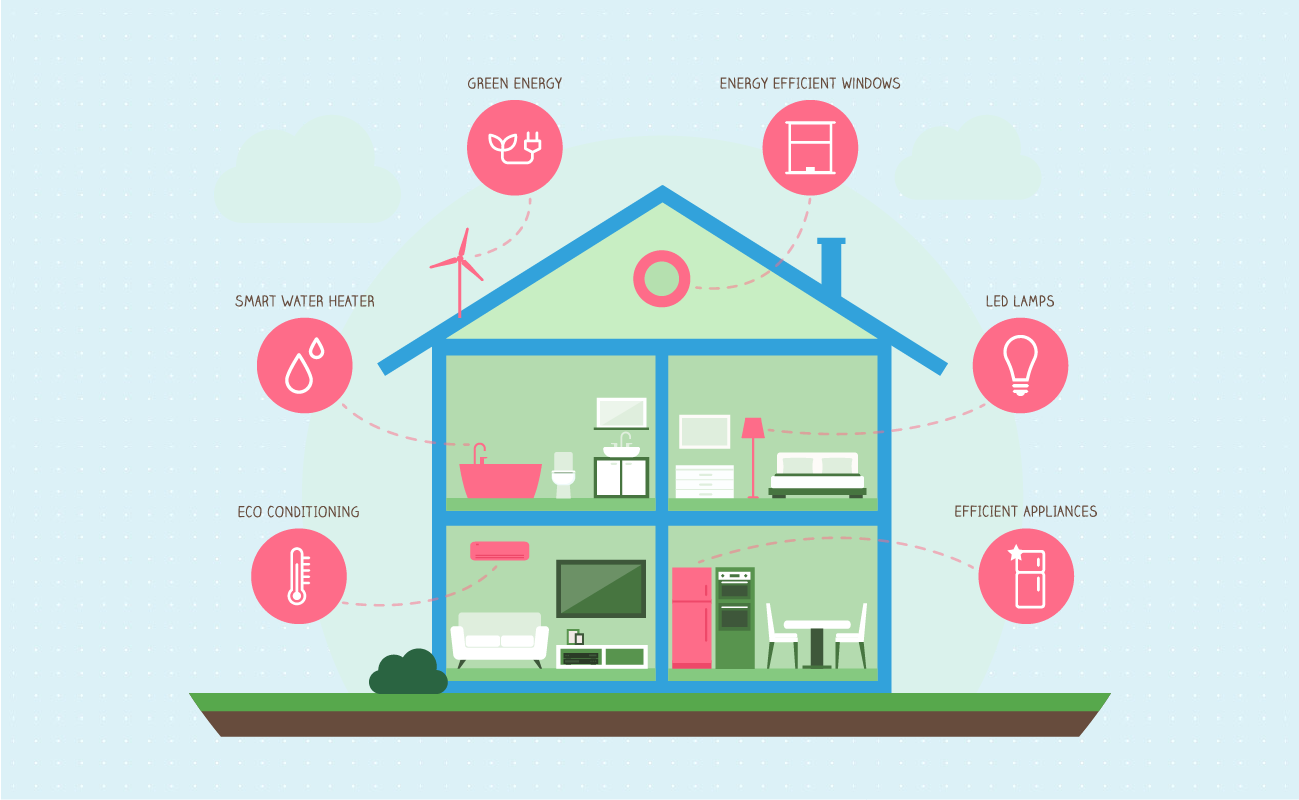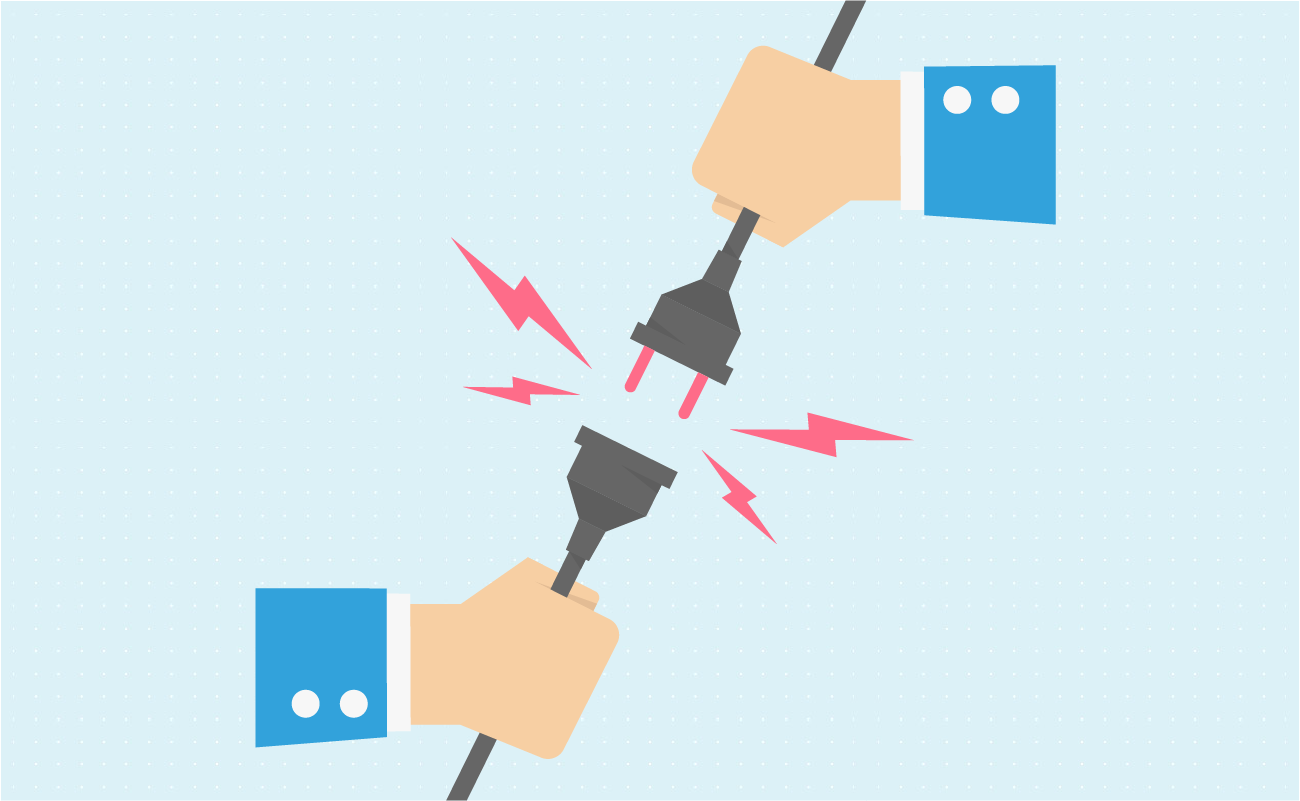 Appliance Operating Cost Calculator
Appliance Operating Cost CalculatorThis calculator will help you to estimate the cost of operating any given electrical appliance, based on the average KWH (kilowatt hours) used per day, and on the average cost per KWH charged by your electric company.
Guide published by Jose Abuyuan on February 22, 2020
As one of the many essentials of modern life, electricity is something we do not think twice about. We rely on electric items for everything from work to entertainment. Even our personal comfort is contingent on some utility use. After a hard day, we all want to chill with Netflix or play a video game. In the summer's swelter, we want air conditioning.
But energy bills don't only sap our budgets. Power plant emissions are a leading contributor to many serious environmental issues. Energy inefficient households continue to be a leading indirect source of atmospheric pollutants.. The more power people use, the higher the demand for electricity, and the more fuel is burned.
Fortunately, energy efficiency is one of those things that work toward your benefit. Although this sounds easier said than done, the rewards you gain from it are immense.

The price of energy comes from both the cost of generating power, maintaining the grid's infrastructure, and paying value-added taxes on energy. Energy dependent on fossil fuels tends to fluctuate in price more than those reliant on renewables. When coal costs rise, the price of energy rise with it. Weather's effects can also influence how much people use energy. Summer brings with it a rise in air conditioning use.
Due to the way the grid is arranged, we can't be truly sure where our energy comes from. The one exception is if you have a solar array in your roof. All energy companies sell their power to the grid. The electricity generated has no discernable difference to the consumer.
All forms of power have their environmental drawbacks. Even the production of solar power requires mining. But does that mean that all energy is equal? Far from it. The amount of emissions created by coal far surpasses those of renewables. Looking at the production chain of coal energy alone can also make you think twice.
The price of power is a tenuous one, with no easy answers for everyone. Rather than fretting on whether power came from coal or solar, you can just use less power and have the same effect.
The fires of coal furnaces were the spark that ignited the industrial revolution in the West. Today, coal still provides 40 percent of the World's energy needs. Although it continues to dominate the U.S. energy market, Old King Coal is slowly being dethroned.
| Pros | Cons |
|---|---|
| Coal is plentiful, cheap, and domestically available. The U.S. has several operational coal mines across its borders. Unlike oil, it does not need to be imported. | Coal mining is dangerous work. Miners are at risk of diseases like black lung after long-term exposure to coal dust. |
| Coal power plants are some of the easiest and most inexpensive power plants to build. | Coal smoke is a health hazard. Coal smoke contains sulfur dioxide, carbon monoxide, arsenic, and various carcinogenic compounds. |
| A thermal power plant can be built almost anywhere. | Coal is the dirtiest of the fossil fuels. Coal emissions contain a high concentration of noxious pollutants. Burning coal produces more pollution than any other source of energy. |
| Eventually, coal supplies are going to run out. |
The other fossil fuel, oil, is largely restricted to transportation. Power plants that run on oil provide only three percent of America's energy.
| Pros | Cons |
|---|---|
| Oil is (slightly) cleaner than coal. It produces less pollution than coal but more than natural gas. | Oil still produces a lot of pollution when burned. |
| Oil is easily processed into high grade fuels. | Oil supplies fluctuate. The high demand of oil as transportation fuel make it more expensive compared to other sources. |
| The U.S. has plenty of oil fields. Domestic production is growing. | Oil is not a renewable resource and its supplies are scarcer than coal |
| Oil is transported via tankers, which make it a good option for coastal port cities. | Oil is sometimes sourced from unstable regions. |
| Power plants for oil can also burn natural gas. A power station can switch fuels depending on whichever is cheaper at the time. | Oil creates a lot of problems for the environment when it spills. |
The U.S. and many countries across the globe have switched gears to natural gas whenever they could. It is one of America's fastest growing energy industries. Its growth has been instrumental in weaning the grid away from coal.
Mainly used for domestic heating, natural gas is an excellent alternative fuel for thermal power plants. The recent boom in fracking led to a huge supply of natural gas. It has earned the moniker of the “cleanest fossil fuel.” Whether it deserves the title, though, is dependent on how it is used.
| Pros | Cons |
|---|---|
| Natural gas burns well and creates a lot of energy. | Natural gas contains methane, a potent pollutant. It loses all its environmental advantages if it leaks out. |
| Burning the polluting gas for energy is better for the environment than flaring it out. | The extraction of natural gas through fracking uses a lot of water and has been linked to ground tremors. |
| Natural gas, when burned, produces less pollutants than coal or oil. | It is difficult to transport natural gas. It is thus limited to domestic consumption. See above for one of the dangers of long-distance natural gas mining. |
| Natural gas is very abundant. It is a common byproduct found in many oil-producing areas in the U.S. | Natural gas reserves are limited. It is possible to extract methane from organic sources, but this isn't very efficient. |
Once hailed as an energy revolution, nuclear power is alternatively prized and despised. It remained stagnant compared to other energy sources in the country. The reason for this stagnation is simple: the power of the atom is not a toy. It is a lesson people know too well. Its proponents, however, believe it to be better for the environment if used safely. They argue that the amount of energy produced more than justifies the risks involved.
| Pros | Cons |
|---|---|
| A large nuclear power station can produce a massive amount of cheap energy. | Nuclear meltdowns are disasters of an otherworldly scale. A meltdown can affect the people within several miles of the plant if radioactive material escapes. |
| Nuclear power plants produce very little pollution if everything works well. | What little waste it produces is radioactive and dangerous to humans. Most nuclear byproducts have a radioactive half-life in the thousands of years. These would need to be stored somewhere safe to protect the people and the environment. |
| The U.S. has plenty of uranium deposits in abundance. Countries that export uranium (including Australia) are usually very stable. | Nuclear power plants are very expensive to build. They must be built to exact specifications to cut any risks. Demolishing a nuclear power plant is also not an easy task. |
| Because very little fuel is used, uranium will not be in short supply any time soon. | The U.S. production chain for nuclear plants is not economically workable. It requires an educated workforce and specialist equipment. |
These two forms of electricity are dependent on two things: water and geography. Hydroelectricity has been a familiar part of the American landscape in the form of dams. Although they produce no pollution, their regional limits do put a cap on where they can be built. In the right spot, however, they can provide massive amounts of inexpensive power.
Very little of the energy used in the U.S. comes from geothermal sources. Nonetheless, the country is still a leading producer of geothermal energy.
| Pros | Cons |
|---|---|
| Power plants within dams are an excellent renewable source of energy. | These can only be built in the mountainous upper reaches of rivers. |
| Dams can also be used to store water. Dam construction is a good investment of utility resources as a result. | Dams have a negative ecological impact on the life that lives in and near its river. It disrupts the flow of fertile sediments and the migratory patterns of fish. |
| Hydroelectric plants produce no pollution at all. | The presence of a dam might affect the water supply of the people downstream. |
| The resulting lake often becomes a tourist attraction and an extra source of income for a locality. | The lakes created by dams can displace people. A huge dam may create a lake so large it destroys entire cities. |
| Dams help control flooding in river valleys. | A dam overflowing or breaking can lead to disastrous floods. |
| Pros | Cons |
|---|---|
| Geothermal power derive energy from warm water and steam beneath the Earth. They produce no pollution. | They need to be near an active volcano and a high water table to be effective. In the U.S., such places are common but still largely untapped. |
| If the water table holds, the energy is renewable. | Prospecting for a good spot is an expensive proposition. There are high risks involved in searching for the appropriate subterranean aquifer. |
| Geothermal plants outpace all other sources of renewable energy. | It is possible in some places for the water table to run out or not be replenished enough. |
| These power plants are less damaging to the environment. |
Workable clean energy is wishful thinking no longer. Commercial renewable energy has experienced a boom in recent years. New technologies have made renewable options an attractive alternative to conventional power.
Much of their appeal, however, comes from their accessibility to the common person. Today, renewables can reduce people's reliance on polluting energy sources on a domestic scale. Of these, solar is experiencing the biggest boom since it is often the easiest to set up.
| Pros | Cons |
|---|---|
| Wind turbines are not as bulky as large-scale solar plants. They can be built into an existing field without affecting the use of the land. | The variability of the wind makes wind turbines an unreliable source of power. |
| Leasing out land for wind energy production is a good way for farmers to make extra money from their land. Because the windmills are tall, they do not interfere much with farm production. | Wind turbines can only be placed in areas with consistent strong winds. A few examples include hills, fields, and coastal regions. |
| Wind energy produces no pollution at all. | Windmills are expensive to set up and have high maintenance costs. They demand a lot of space to produce the same amount of power as a regular power plant. |
| Wind power does not rely on a fuel source. Barring days with no wind, windmills can keep producing power with no human intervention. | The presence of wind turbines is hazardous to birds. |
| Wind turbines are visually interesting structures and can become a tourist attraction. | Windmills are noisy, not-in-my-backyard structures. Some people think they are ugly. |
| Windmill blades are difficult to dispose of at the end of their life cycle. |
| Pros | Cons |
|---|---|
| Solar power is an excellent investment for homeowners. Enough panels can help them achieve energy self-sufficiency. | Solar panels require careful placement to maximize their output. They are the most feasible on a commercial scale in sunny or arid places. The panels must face east or south to be efficient. |
| Solar panels are the best option for small-scale energy production. A lot of saturation can produce a lot of energy into the grid in daytime. | Solar panels cannot make electricity at night. It is a challenge to store excess solar energy for night use. |
| Solar panels continue functioning even in cloudy weather, albeit at a reduced capacity. | The high initial costs can put off smaller consumers. |
| These panels are a one-time investment. The homeowner can continue making energy as long as the panels are well-maintained. |
In 2018, the U.S. charged on average about 10.53 cents per kilowatt hour. Energy remain cheapest at Louisiana and Arkansas. There, the average retail price hovered under 8 cents per kilowatt hour (kWh). Third comes Washington state, where the average retail price at the time was a flat 8 cents per kWh. Hawaii, meanwhile, had the highest average retail price at 29.18 cents per kWh.
The two states with the lowest cost drew much of their power from fossil fuels (natural gas for Louisiana, and coal for Arkansas, respectively). Washington, the third lowest, drew much of its power from hydroelectricity. Hawaii, with the highest energy costs, drew much of its energy from oil.
The data below was drawn from the U.S. Energy Information Administration.
| State | Average retail price (cents/kWh) | Net summer capacity (MW) | Net generation (MWh) | Total retail sales (MWh) |
|---|---|---|---|---|
| Alabama | 9.63 | 30,118 | 145,057,994 | 90,285,545 |
| Alaska | 19.36 | 2,745 | 6,247,359 | 5,972,467 |
| Arizona | 10.85 | 28,672 | 111,925,144 | 78,346,302 |
| Arkansas | 7.78 | 14,763 | 67,999,352 | 49,602,708 |
| California | 16.58 | 75,926 | 195,265,412 | 255,349,610 |
| Colorado | 10.02 | 16,590 | 55,386,279 | 56,450,480 |
| Connecticut | 18.41 | 9,833 | 39,453,552 | 28,833,925 |
| Delaware | 10.55 | 3,378 | 6,240,644 | 11,773,100 |
| District of Columbia | 12.03 | 32 | 79,331 | 11,357,910 |
| Florida | 10.31 | 57,359 | 244,252,010 | 238,993,089 |
| Georgia | 9.62 | 36,989 | 129,239,355 | 139,866,074 |
| Hawaii | 29.18 | 2,811 | 9,796,773 | 9,337,161 |
| Idaho | 8.17 | 5,210 | 18,172,120 | 23,753,508 |
| Illinois | 9.60 | 45,631 | 188,003,357 | 142,654,808 |
| Indiana | 9.75 | 26,696 | 113,459,711 | 104,217,003 |
| Iowa | 8.92 | 18,842 | 63,380,566 | 51,213,960 |
| Kansas | 10.72 | 15,631 | 51,710,213 | 42,044,003 |
| Kentucky | 8.52 | 20,120 | 78,804,497 | 76,610,636 |
| Louisiana | 7.71 | 23,162 | 102,128,500 | 94,186,072 |
| Maine | 13.44 | 4,864 | 11,280,700 | 12,354,819 |
| Maryland | 11.57 | 14,777 | 43,809,646 | 62,086,455 |
| Massachusetts | 18.50 | 12,875 | 27,172,882 | 53,285,029 |
| Michigan | 11.40 | 29,720 | 115,837,095 | 104,869,496 |
| Minnesota | 10.37 | 16,954 | 61,517,442 | 68,729,377 |
| Mississippi | 9.24 | 14,733 | 63,473,771 | 50,390,068 |
| Missouri | 9.93 | 21,078 | 81,435,776 | 82,058,027 |
| Montana | 8.84 | 6,356 | 28,195,174 | 14,838,845 |
| Nebraska | 9.02 | 8,984 | 36,966,216 | 30,939,492 |
| Nevada | 8.67 | 11,494 | 39,640,241 | 37,780,263 |
| New Hampshire | 17.01 | 4,469 | 17,087,156 | 11,046,284 |
| New Jersey | 13.23 | 17,403 | 75,033,600 | 76,016,762 |
| New Mexico | 9.35 | 8,431 | 32,673,682 | 24,048,611 |
| New York | 14.83 | 41,124 | 132,520,498 | 149,929,851 |
| North Carolina | 9.25 | 34,178 | 134,249,497 | 138,293,957 |
| North Dakota | 8.91 | 8,381 | 42,615,321 | 20,669,506 |
| Ohio | 9.94 | 29,142 | 126,184,610 | 152,915,167 |
| Oklahoma | 8.09 | 27,401 | 86,223,721 | 64,575,316 |
| Oregon | 8.85 | 16,590 | 64,113,560 | 49,347,814 |
| Pennsylvania | 10.10 | 48,558 | 215,385,830 | 148,976,731 |
| Rhode Island | 18.10 | 1,958 | 8,375,257 | 7,583,339 |
| South Carolina | 9.66 | 23,662 | 99,364,088 | 81,787,241 |
| South Dakota | 9.97 | 4,169 | 12,616,396 | 12,865,645 |
| Tennessee | 9.58 | 21,349 | 81,554,934 | 102,911,183 |
| Texas | 8.48 | 122,159 | 477,352,424 | 424,528,419 |
| Utah | 8.21 | 9,003 | 39,375,424 | 31,242,408 |
| Vermont | 15.13 | 765 | 2,178,915 | 5,530,948 |
| Virginia | 9.48 | 29,635 | 95,506,976 | 118,186,645 |
| Washington | 8.00 | 30,983 | 116,756,729 | 90,005,791 |
| West Virginia | 8.72 | 14,851 | 67,249,025 | 33,646,813 |
| Wisconsin | 10.58 | 15,516 | 65,936,767 | 70,965,457 |
| Wyoming | 8.09 | 8,673 | 46,112,136 | 16,864,678 |
| Nationwide | 10.53 | 1,094,740 | 4,174,397,654 | 3,860,118,798 |
Compared to the rest of the world, however, the average prices of energy in the U.S. has held steady. Denmark, Germany, and the Republic of Ireland have some of the highest average energy prices in Europe.
The average American household uses about 914 kWh per month. This translates to $96.25 a month and $1,154.93 a year. Consumers from Tennessee use the most electricity per household, while those in Hawaii consume the least. There's more to the price than just the cost of electricity, though. People in recent years rely on more appliances. At the same time, newer appliances are more energy efficient.
Some of the sources of power cost issues are closer to home. Inefficient architecture, unseen problems, and outmoded appliances are just some of the big contributors to your power bill.

Thinking about getting a fancy executive home? We urge you to think again. Buying too much house is already a bad deal for many homeowners. Just wait until you see the power bill.
Tacky, oversized homes are notorious for their energy inefficiency. Many of these houses are not well-designed, and we're not talking about mere aesthetics. The large, two-story halls of these homes, for instance, are difficult to heat and cool. Too many (or too few) windows add challenges to ventilation.
New technology and good design choices can reduce the energy costs of a large house. Work with an architect to help improve the energy efficiency rating of your new home.
Other sources of architectural inefficiency may come from structural flaws in your home. Sometimes, this is to be expected from a fixer upper. All houses need maintenance from time to time. Others, however, emerge from the carelessness of the builder. A slipshod construction job is bound to have a few leaks here and there.
If you find plenty of cool or warm spots in your home, you might have problems with your insulation. Leaky insulation can tax your heating and cooling systems. Left unaddressed, these issues can cause your utilities costs to skyrocket.
Despite what some people tell you, more power doesn't translate to better performance. The biggest culprits are large appliances, such as refrigerators and dryers. Older appliances in general consume more power than their modern counterparts.
In addition, appliances aren't always used effectively. Not everybody uses their washing machines and dryers to full capacity. Likewise, they leave their electronics on standby for too long.

Reconsider cryptocurrency mining. It is an energy intensive undertaking that will cost you more in power than what you stand to gain. You are better off saving on your power bill and investing your money on a less volatile asset.
Energy inefficiency ticks all the criteria for an unnecessary expense:
Sounds a lot like the type of expense you can cut out without a second thought, right?
With the right choices, you can save on power and live a life of comfort without wasting a cent. Optimizing your energy efficiency is one of the best things you can do for the environment. Mother Nature and Brother Bank Account will thank you for it.
A little home improvement can pay off big time. And we're not talking about the flashy stuff you see in the home improvement shows. Instead, consider spending your money on less glamorous home repair and maintenance projects. Put your weekend warrior skills to good use by boosting the energy efficiency of your home.
Eco-friendly windows can help reduce your energy bills by up to 15 percent. They can cost a pretty penny, however. You can expect to spend at least $8,000 on upgrading all your house's windows. Save this option if you are in no rush to buy a new home.
Modern fixtures are another big expense that pays off. A new, energy-efficient heater saves you money in hot water use. You can also use it as a key selling point to attract fellow eco-minded home buyers. You can even install a programmable thermostat to help control your energy usage. The savings it can give is also an attractive selling point for potential buyers.
With a little patience, your home can beat the heat with trees. Areas shaded by trees can be cooler than the surrounding area by around 20 to 45 degrees Fahrenheit. This is especially felt if one grew closer to a window. Moreover, a nice-looking tree can improve your home's curb appeal and bolster its market value.
When you're buying a fixer upper, insulation should be the first thing on your home improvement list.
Remember the leaky spots we talked about earlier? Those are your culprits. Identify areas in your home with insufficient insulation coverage and address them. This can give you an immediate return of investment. Your heating and cooling bills can plummet the moment your house is tightly sealed. And don't stop there. Consider the costs and benefits of insulating your attic.
Even seemingly insignificant holes can undercut the efficiency of your insulation. You should also include weatherizing as part of your to-do list. This involves seeking out and sealing air leaks across your home.
When fixing the insulation on your house, choose an appropriate R-value. This measures the ability of an insulator to stall the flow of warm air. Higher R-values are better for cooler climates. Lower ones are ideal for warm weather places. Visit this page to find the ideal R-value for your area.

We've mentioned that better quality products are cheaper for you in the long run. Appliance shopping is one of the best places to save by spending. In general, you should replace household appliances with newer models every ten years.
Although green appliances are pricier, they can provide you with big savings on energy costs. Modern refrigerators, for instance, can cool food down using the same energy as a 60-watt lightbulb.
Appliances are thus one of the few things that are more cost effective to buy new. Look for a higher energy star rating on new appliances. Size also matters when it comes to energy efficiency. Choose energy efficient appliances that match the actual capacity you need. Go big only when you need big.
Smart shopping is the key to maximizing your savings. Look for the EnergyStar ratings in each of your appliances. Do the math and see if any of the appliances you use right now have energy-efficient counterparts. Use our calculators above to measure how much you can save in power.
More power doesn't mean better performance. Incandescent bulbs are among the most energy inefficient bulbs in the market. They produce an inordinate amount of heat compared to the light they produce. Only 10 percent of the wattage used by an incandescent bulb is converted to light. Moreover, they don't last long. Incandescent lamps burn out after about 1,000 hours (or around 41 days).
Most modern lamps, including light-emitting diodes (LEDs), consume far less energy to produce the same amount of light. These lamps produce far more light—about 90 percent of their energy consumption. These bulbs also last longer. A good quality LED bulb can last more than 20 years. On average, a LED bulb consumes only 6.5 watts to produce the same amount of light as a 60-watt incandescent bulb.
Unless you're keeping a pet turtle, you're probably better off switching all your lights to LEDs.
Everyday habits can help you cut down on power use. Turn off and unplug appliances when you leave the home. Optimize your power use by turning on appliances and gadgets only when they you need them.
Every big job begins with small, doable steps such as these. The best part about these energy-saving habits is that they cost you nothing. A little self-discipline goes a long way in cutting down your energy expenditures.

Many appliances continue to function in a low-power state while plugged in. Being on standby is meant to make them more convenient to use. In practice, however, these appliances waste energy by consuming power while idle. Called phantom load or vampire energy, this adds a considerable amount to your power bill.
Some of the serial energy vampires include microwave ovens, televisions, and computers. This goes double if these items have a clock on them. While a microwave's clock takes less energy to run than cooking food, the clock continues to run day and night. Televisions, when plugged in, remain in a low-power standby mode to receive the signal from the remote.
These vampires are a cinch to slay. The truth is that most of these products don't need to always be plugged in. Be your own Buffy, Blade, or Van Helsing by unplugging appliances when they're not in use. Leave on standby only things that you otherwise constantly use. You'd be surprised on how much you can save this way.

Your kitchen or entertainment center often have the greatest number of energy vampires. Use a surge protector or power strip to contain these appliances all in the same place. This makes it easy and convenient to manage the power use of these appliances.
Vampire energy has a double impact on batteries. An AC adaptor connected to a charged battery isn't turned off. It would continue to consume power. In addition, leaving your charger plugged in for too long can cause your device to lose battery life. Hit two birds at once by unplugging your chargers once finished.
The cost of renewable energy is largely tied to set up. Windmills and solar panels cost a lot to install. Today, however, the costs have dropped enough that they can be a worthwhile investment even for the average person. For people living in isolated areas far from the grid, these could be the only practical source of electricity available.
Domestic solar power is the darling of many consumers. Policymakers from both sides of the divide love them for the benefits they bring. Solar panels allow homes and businesses to cut the costs of power in sunny days. In many places, solar and wind power are the cheapest sources of power to set up.
Solar energy sounds good on paper. For many families, this can be the ticket to eliminating their power bill once and for all. But much like other renewables, solar energy is contingent on many factors. The viability of a solar array is contingent on the following:
If your home fits the above criteria, congratulations. You now have the prerequisites for an optimum solar array. Having only a few of these needs met is not an impediment to going solar, though. Even when their capacity is reduced, solar arrays can still save you money on power if you get enough sun. If you have enough space on the ground, a solar array might work better there.
Solar energy is a big investment. You would need to have ample room for enough solar panels to power your house. The expense of installing solar panels make in an option exclusive to homeowners.
Ideally, a solar array is viable when its costs fall below long-term price of electricity. Of course, not everyone can get on the solar chariot. Here are a few things that work against going solar at home:
The last two conditions make it impossible to negate the others. Even occasional inefficiencies can be offset with more panels. If you can't put enough panels in, then you might find the costs too prohibitive. You might also reconsider solar if you don't want to cut down or trim down the trees in your property.
Solar's heat threshold might stymie its popularity in desert states. If you live in an arid region, check the numbers before committing to this investment. The sun might always be on your side, but the heat might not.
Finally, even leasing panels from a provider might not be a good option if you want to maximize your savings. It might be cheaper, but you lose the rights to any excess power (and extra profits) you might get.

In the daytime, your panels may produce more energy than you need, which you sell to the power company. Any power you consume at night is paid for by the energy you sold in the daytime. You can reduce your bills by a significant amount this way.
In the right conditions, you may not pay for any electricity bills at all. If you sell enough power, your power company might even pay you.
Like most sensible improvements, solar panels increase the resale value of your home. It also makes the home desirable. Who wouldn't want to live in a house that uses less power? In some places, the amount you gain from the property value of your house could recoup your initial costs.
Consistent sunny weather can work in solar energy's favor. Sometimes, communities filled with solar powered homes produce enough energy to sell back to the grid. The resulting power overload means that the local grid can rely on this power all day long. Moreover, a community reliant on solar energy can cut its emissions by more than half. Power plants operate at a much lower capacity, reducing the amount of fuel they burn.
Jose Abuyuan is a web content writer, fictionist, and digital artist hailing from Las Piñas City. He is a graduate of Communication and Media Studies at San Beda College Alabang, who took his internship in the weekly news magazine the Philippines Graphic. He has authored works professionally for over a decade.